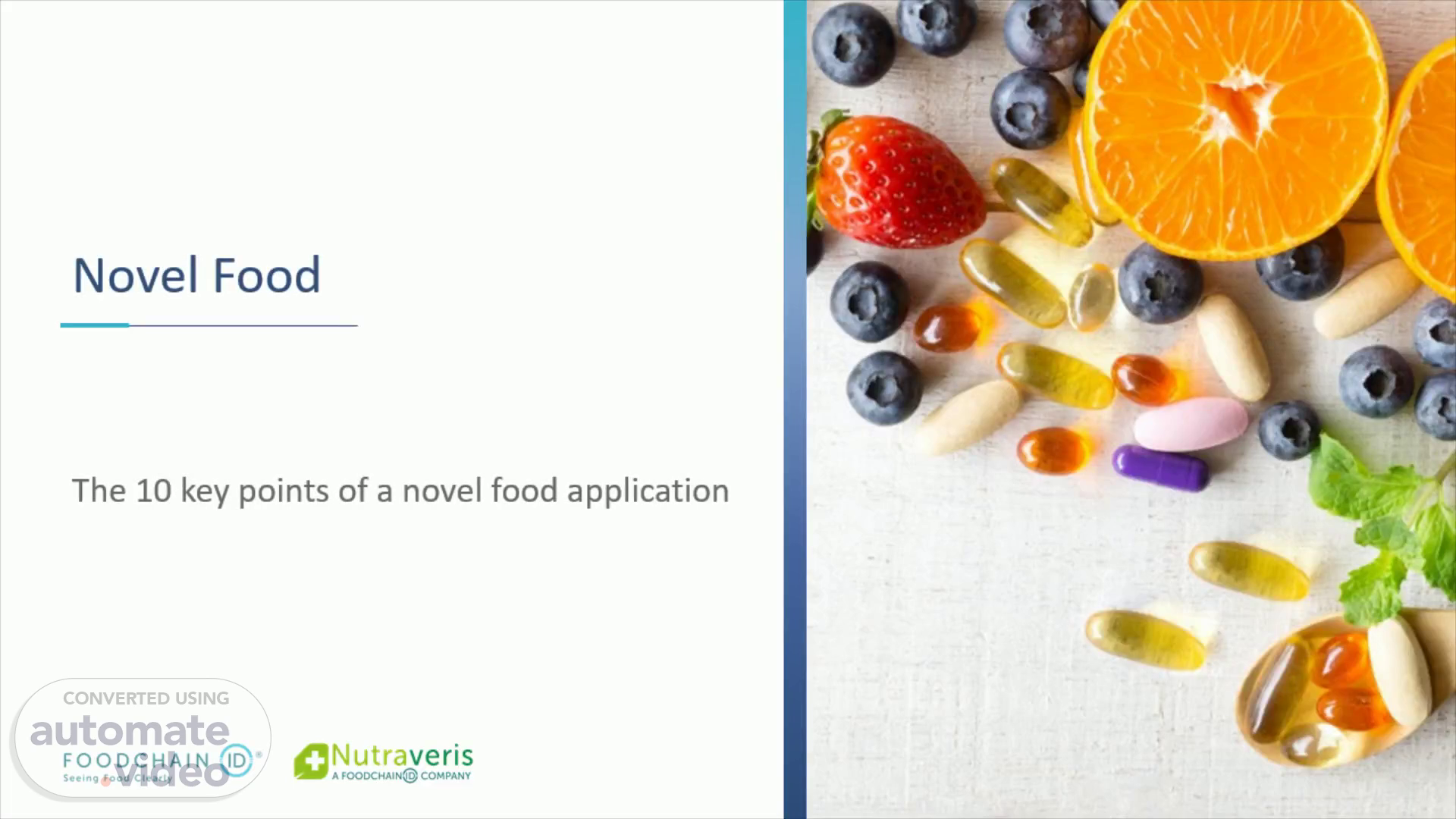Page 1 (0s)
Novel Food. The 10 key points of a novel food application.
Page 2 (7s)
The novel food application: a difficult exercise that requires real expertise..
Page 3 (38s)
1- The manufacturing process. To be fully presented With control points With quality certifications.
Page 4 (1m 18s)
2 - 5 independent lots to analyze. Today, most dossiers present data on five independent batches of the ingredient, in accordance with EFSA's request. These analyses do not present major problems, as long as the results confirm the absence of variability between batches, even if EFSA often raises problems on the following points: Analytical methods: if possible, use recognized and validated methods (AOAC, pharmacopoeias, ISO, etc.). In case of in-house methods, it is mandatory to describe the method and the validation, which can be problematic for confidential methods developed by laboratories. The analysis must cover the whole ingredient (> 95% of the identified components) and cannot be satisfied with only one marker or active. The analyses must cover all the parameters of the specification sheet. This specification sheet is quite often discussed by EFSA, which asks for the addition of some parameters..
Page 5 (1m 56s)
3 - A complete analysis of contaminants. Heavy metals Microbiology Pesticides Residual solvents PCB and dioxins Etc....
Page 6 (2m 25s)
4 - Stability: a potential difficult evaluation. Stability of the raw material (= ingredient) Stability in finished products Sensitivity to certain industrial processes: temperature, low pH, etc....
Page 7 (2m 56s)
5 - Nanomaterials: beware of risks. EFSA has recently updated the guidance that describes the risk assessment of nanomaterials in the food chain. Included are manufactured nanomaterials but also materials that contain more than 10% nanoparticles (particles < 500 nm). In order not to be subject to this guidance, it is therefore necessary to demonstrate that the proposed novel food does not expose consumers to particles < 500 nm. To do this, several steps of food testing must be followed: 1) solubility/dissolution rate test, 2) measurement of particle size distribution, 3) review of existing studies. If the novel food contains nanoparticles, in vitro and in vivo assessment of nanoparticle toxicity should be performed. The risk related to nanoparticles must be characterized taking into account the specific characteristics of nanoparticles (available surface, dispersion, agglomeration, bioavailability, biokinetics, etc.)..
Page 8 (3m 32s)
6 - Clearly define the conditions of use. Target population and excluded population Food supplement alone or more complex food matrices Maximum doses per food matrix Precaution of use.
Page 9 (4m 4s)
7 - Exposure calculation. Exposure to the novel food or ingredient under the proposed conditions of use Combined exposure from the novel ingredient and other potential sources Exposure to contaminants and nutrients.
Page 10 (4m 41s)
8 - An absorbed ingredient: mandatory pharmacokinetic data.
Page 11 (5m 15s)
9 - Toxicity: a tiered approach. 3-level approach Complies with OECD guidelines GLP certified laboratory An evaluation that can be modulated according to the Novel Food.
Page 12 (6m 6s)
10 - Allergenicity: how to assess it?. Amount of protein in Novel Food Ingredient considered allergenic before evidence to the contrary Data from literature or if inconclusive own experimental data.
Page 13 (6m 45s)
Do not hesitate to contact us for any information.
